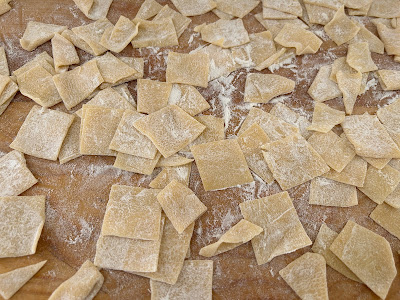Not to be confused with the potato based small dumplings called rolled potato dumplings, these were leftovers from small flour based dumplings, called egg dumplings or nokedli. Nokedli of course is best when fresh, so I try to add the leftover to soups or as in this case remake them into something completely different. I cooked a large potato and combined it with the leftover nokedli, hence the name Potato Nokedli.
1 cup leftover egg dumplings
1 large potato, chopped
1 Tbsp oil
2 Tbsp butter
salt and pepper to taste
fresh parsley leaves, optional
• Peel, and chop the potatoes into bite size pieces.
• Cook them in water until soft.
• Drain and add them to the leftover nokedli.
• Add the oil and the butter to a fry pan and place on medium heat.
• When the butter melts, add the potato/nokedli mixture to the pan and stir to combine.
• Season the mixture with salt and ground pepper to taste and heat through.
• Add the fresh parsley leaves and serve.
the addition is chopped, boiled potatoes
2. Potato Pasta from Paprika Potatoes Leftover
My darling always enjoyed Potato Pasta and with the leftover Paprika Potatoes we were halfway there. You may ask why bother to write another recipe when I already have a perfectly good Potato Pasta recipe. But for those of us who regularly cook Hungarian dishes this makes sense. I don’t think I ever managed to make paprika potatoes for only one sitting. We always have leftovers, but never enough for another dinner. Besides what is Potato Pasta? It is the combination of Paprika Potatoes and Cooked Pasta. In this case we already had one of the components I just had to make a batch of square pasta. Combine the cooked pasta with the leftover paprika potatoes, heat it through and voila potato pasta! I just never thought of it before.
the addition is homemade square pasta

























